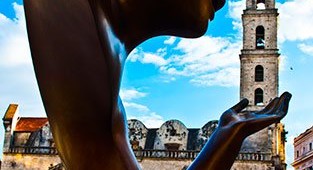In his own words:
“My book Havana is just a superficial look, not a soul searching investigation, a quick impression of a place that is unique in it’s geographical position, being much closer to the United States of America than the space station. Both are places ordinary Americans cannot visit. To be one of the poorest nations on Earth, almost within spitting distance of the richest, makes the poverty of Cuba seem more extreme. Two countries with extreme ideologies; the small one proving that Communism does not work, the other proving that democratic paranoia does work if the power and the money are in place.” David Bailey
Havana shows Bailey at the height of his powers, producing photographs that reflect his mastery of the full range of the distinct genres of the medium. From vibrant street reportage to seering portraiture, this book offers a quintessential view of a city which is the touchstone for one of the most distinct cultural and political divides in a world fast moving towards homogeneity.
About David Bailey
David Bailey CBE
David Bailey was born in 1938 in London. He taught himself photography, and in 1959, following a year serving with the Royal Air Force in Malaysia, he began his long and distinguished career when he was appointed as a photographic assistant at the John French Studio in London.
Bailey started as a fashion photographer for Vogue Magazine in 1960, and subsequently as a freelance photographer who has worked for every major publication in the world. From 1966 he also directed television commercials and documentaries.
In 1975 he became a Fellow of the Society of Industrial Artists and Designers. In 1979 he was awarded an Honorary Fellowship of the Royal Photographic Society.
Bailey has held numerous personal exhibitions in London and worldwide (Finland, Sweden, the United States of America, Germany and Italy). He has also produced numerous publications, from his first publication Box of Pinups in 1964 to Archive Two — Locations in 2003 and Bailey’s Democracy due to be published Nov 2005. His television work includes documentaries on photographers and directors including Cecil Beaton, Andy Warhol and Luciano Visconti. He also wrote and directed a short film called The Lady is a Tramp, to coincide with the publication of his book of the same name in 1995.
David is one of the world’s leading photographers and short film directors. In 2001 he was awarded a CBE in recognition of his achievements, and the University of Plymouth is proud to be able to add its own recognition of his outstanding contribution by awarding him an honorary degree.


 Other
Other








